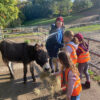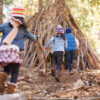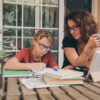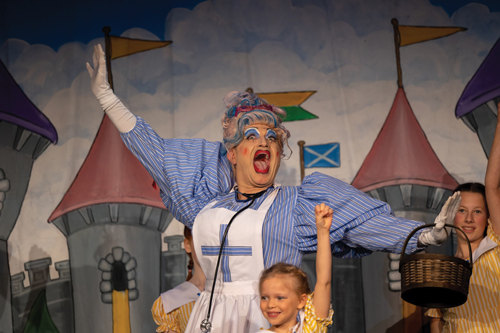
by Nicola Thornton
Ropetackle Arts Centre
Where’s the one place you can take all the family at Christmas and be guaranteed they will crack a smile, even those that don’t like smiling? (I’m looking at you, too-cool teenagers!)
Yes, it’s the Christmas pantomime! An explosion of noise, dry-ice, jokes, music, cheesy scripts, creaking sets and gaudy costumes that any other time of year might have us running for the hills, but at Christmas it is suddenly the best thing you’ll ever do.
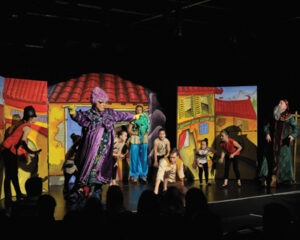 It starts the minute you arrive at the venue. The staff and volunteers all have bright eyes and wide grins that actually look genuine, the café or kiosk is serving Christmas-themed cookies and cupcakes and Christmas pudding flavoured ice-cream. The bar is serving large glasses of everything, including delicious mulled wine. The smell of excited anticipation is everywhere.
It starts the minute you arrive at the venue. The staff and volunteers all have bright eyes and wide grins that actually look genuine, the café or kiosk is serving Christmas-themed cookies and cupcakes and Christmas pudding flavoured ice-cream. The bar is serving large glasses of everything, including delicious mulled wine. The smell of excited anticipation is everywhere.
As you take your seat, the questions start. Child number 1: “What’s behind that curtain?” Child number 2: “I think I do want to go to the loo now, can you please take me?” Spouse: “Have you got a wet-wipe?” Grandparent: “Are you sure you won’t get a parking ticket?”
Teen: “Why am I here again?”
As you answer them all with a wide grin that looks anything but genuine, something starts to happen in the wings. The curtain goes up, the lights go down and you’re off – off to that land of chaos, magic, satin, glitter and glitz, where nothing is real. You encounter a beautiful princess, a handsome prince, perhaps a genie or fairy godmother, a clown who keeps tripping up, two ends of an animal costume and some sprightly young dancers.
An ample-bosomed Dame – who often looks better than you on a good day – points out to the audience, hands-on hips – animated and proud – and keeps the show, and the gags, on the road. The villain – boo! hiss! – is dressed in black velvet and has your youngest hiding behind their hands but loving them at the same time.
You stomp, you shout, you tell them “He’s behind you!”, you laugh, you groan. You sing, you clap, you watch, you join in, and you chuckle at something that has made the Dame crease up. You pity the poor bloke two rows in front who gets mercilessly picked on and then cheer at his good-sportiness as the audience applaud. You sneak a peek at everyone in your group and you notice one thing: they are all, bar no one, absolutely caught up in the moment.
You find yourself caring that the leading character reaches their goal and lives happily ever after. You want the villain to learn a lesson and become a better person. You believe in the power of community and people working together to make a dream come true. You look around and see the same hope, joy, and wishes on everyone’s face. Pantomime is a universal, unifying experience and the joy is contagious.
At the interval, the clamber for the loos and refreshments is a messy one. Everyone discusses their favourite character, that bit that happened that clearly wasn’t in the script, the Dame’s eyelashes that look like spiders and the brilliant dancing. The fact Evie from child number 1’s class is sitting two rows behind. The noise is heightened, the excitement palpable.
The second half starts with gusto and you’re off again. The set has changed from a forest to a castle. Everyone has a different costume on, especially the Dame, who is now on her fourth outfit of the evening. There’s a touching moment when the clown and the leading light, fed up with being misunderstood by everyone else, vow to be BFFs. There’s more laughs, more slapstick, more props, more getting up and singing along – more fun, more games. There’s a moment when the leading couple find each other, against all the odds, and everyone breathes a huge sigh of relief. It’s all going to be OK.
The finale is here. The part where everyone is on stage at the same time, where a wedding may or may not take place. Where the princess looks the prettiest she has ever looked, the prince the most handsome. The costumes have changed again. The Dame makes another grand entrance; this time in her biggest, flounciest wig. The villain is welcomed, having changed for the better, learned the error of their ways. The silliest song gets sung again (and again) and you get on your feet and all join in. You catch your teen’s eye and they smile a real smile, a child again in an unguarded moment.
You wave, clap and whoop as the cast take their bows. The lights go up, the curtain falls, you gather up your brood and weave through to the exit. Two hours of escapism now over as you head back home – tired and happy, with a ringing in your ears. Another family memory made – and that repetitious song inside your head till spring…
Ropetackle Arts Centre, Shoreham-by-Sea, W. Sussex is a vibrant performing arts venue that prides itself on being family friendly.
Find out more at www.ropetacklecentre.co.uk

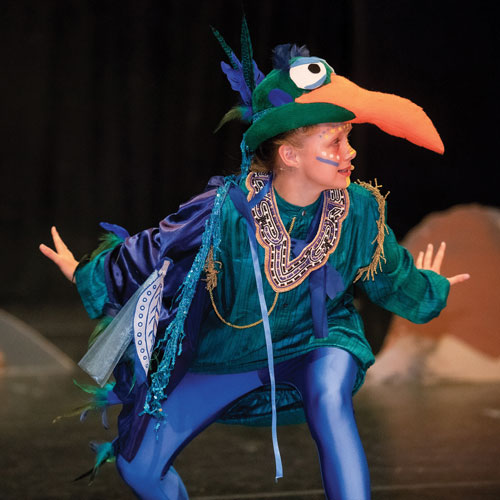
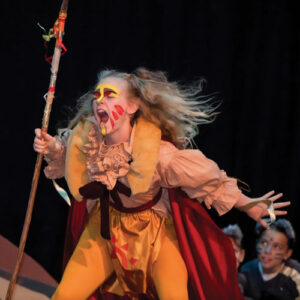 If every opportunity is seized, there is wonderful scope for creating a powerful cross-curricular approach to developing a show. By learning about the literature, history, art, music, and dance that surrounds a story, we cultivate an appreciation for traditions, beliefs, design and stagecraft. As part of the preparations for our school’s recent production of The Lion King this term, the girls studied the patterns, designs and colours used in African prints before creating their own designs for fabrics, masks and marketing materials. They studied each character in the script and crafted symbols and emblems to represent them; meticulously forming links between characters who were related or belonged to the same group. Later, these were hand printed onto fabrics using block printing techniques so that they could finally be made into the cast’s costumes. Through workshops with external educators, they learnt about the importance and significance of symbolism in Adinkra printing; the rhythms and collective energy used in African drumming; and the storytelling techniques, as well as traditional movements, that can be generated through dance. We focused on the importance of recycling materials and made masks and props out of plastic milk bottles. This process was amazing – our girls were captivated by the transformation achieved with these simple objects. In addition to this, by singing songs in African dialects, we enhanced our understanding and appreciation of sounds and languages. The opportunities for extending the students’ learning through stimulating and interlinked topics are boundless.
If every opportunity is seized, there is wonderful scope for creating a powerful cross-curricular approach to developing a show. By learning about the literature, history, art, music, and dance that surrounds a story, we cultivate an appreciation for traditions, beliefs, design and stagecraft. As part of the preparations for our school’s recent production of The Lion King this term, the girls studied the patterns, designs and colours used in African prints before creating their own designs for fabrics, masks and marketing materials. They studied each character in the script and crafted symbols and emblems to represent them; meticulously forming links between characters who were related or belonged to the same group. Later, these were hand printed onto fabrics using block printing techniques so that they could finally be made into the cast’s costumes. Through workshops with external educators, they learnt about the importance and significance of symbolism in Adinkra printing; the rhythms and collective energy used in African drumming; and the storytelling techniques, as well as traditional movements, that can be generated through dance. We focused on the importance of recycling materials and made masks and props out of plastic milk bottles. This process was amazing – our girls were captivated by the transformation achieved with these simple objects. In addition to this, by singing songs in African dialects, we enhanced our understanding and appreciation of sounds and languages. The opportunities for extending the students’ learning through stimulating and interlinked topics are boundless.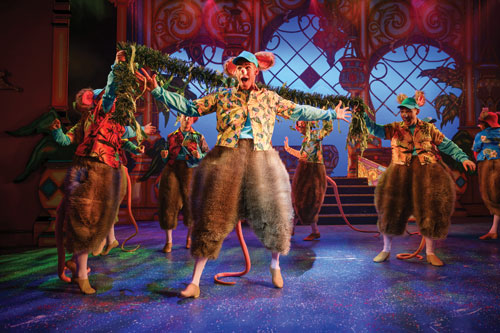
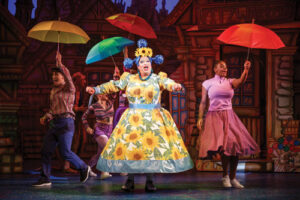 Children’s empathy and emotional intelligence are developed through everyday interaction but they are also nurtured by music, books, and in particular, watching live theatre performances. When watching characters interact on stage, we as the audience connect with them and experience what they are thinking and feeling as if we were thinking or feeling it ourselves – we are practicing how to understand others. Having a safe space to explore difficult emotions is essential to strengthening empathetic muscles and live theatre provides the perfect platform for this. Bill English, founder of the San Francisco Playhouse, states that: “Theatre is like a gym for empathy. It’s where we go to build up the muscles of compassion, to practice listening and understanding and engaging with people that are not just like ourselves. We practice sitting down, paying attention and learning from other people’s actions. We practice caring.”
Children’s empathy and emotional intelligence are developed through everyday interaction but they are also nurtured by music, books, and in particular, watching live theatre performances. When watching characters interact on stage, we as the audience connect with them and experience what they are thinking and feeling as if we were thinking or feeling it ourselves – we are practicing how to understand others. Having a safe space to explore difficult emotions is essential to strengthening empathetic muscles and live theatre provides the perfect platform for this. Bill English, founder of the San Francisco Playhouse, states that: “Theatre is like a gym for empathy. It’s where we go to build up the muscles of compassion, to practice listening and understanding and engaging with people that are not just like ourselves. We practice sitting down, paying attention and learning from other people’s actions. We practice caring.”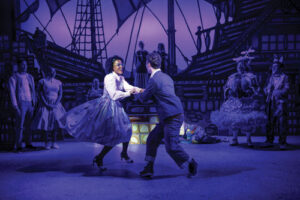 to the theatre can be a fantastic way of making lasting memories and spending real quality time together. For children (and grownups!) going to see a play feels like something special, something out of the ordinary. Whether it’s the grandeur of the building itself, finding your red velvet seats or begging for a tub of ice cream in the intermission, the experience of going to the theatre is something unique before the play has even begun.
to the theatre can be a fantastic way of making lasting memories and spending real quality time together. For children (and grownups!) going to see a play feels like something special, something out of the ordinary. Whether it’s the grandeur of the building itself, finding your red velvet seats or begging for a tub of ice cream in the intermission, the experience of going to the theatre is something unique before the play has even begun.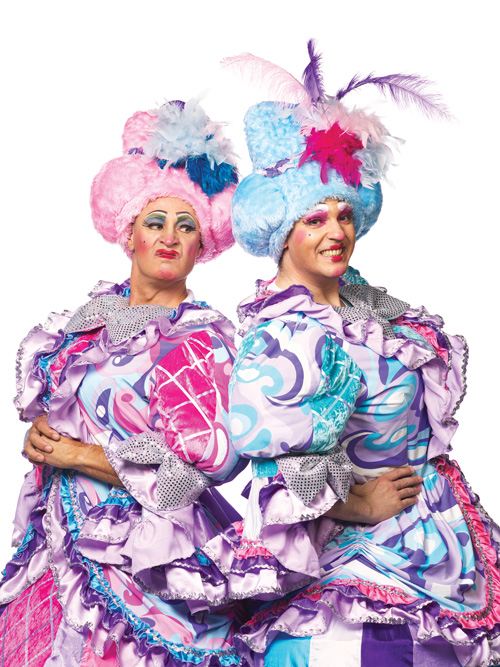

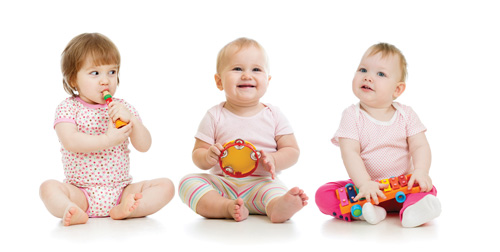
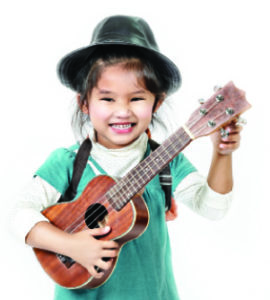 There’s a tiny little instrument that offers a big punch, Al Start from Go Kid Music is singing the praises of the humble ukulele. Let me stop you right there! You were about to turn the page, but hear me out! There are a few really great reasons why this small, innocent looking instrument could be your secret (musical) weapon. Indulge me…
There’s a tiny little instrument that offers a big punch, Al Start from Go Kid Music is singing the praises of the humble ukulele. Let me stop you right there! You were about to turn the page, but hear me out! There are a few really great reasons why this small, innocent looking instrument could be your secret (musical) weapon. Indulge me… Having taught ukulele in schools for over a decade Al Start has perfected the art and packaged it into one super-cool family-focused club! The Go Kid Ukulele Club features online lessons taking you from total beginner to ukulele hero at your own pace, for the price of just one ukulele. Check them out here:
Having taught ukulele in schools for over a decade Al Start has perfected the art and packaged it into one super-cool family-focused club! The Go Kid Ukulele Club features online lessons taking you from total beginner to ukulele hero at your own pace, for the price of just one ukulele. Check them out here: 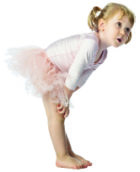
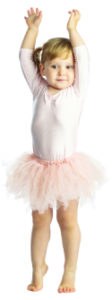
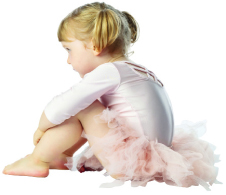 Respect
Respect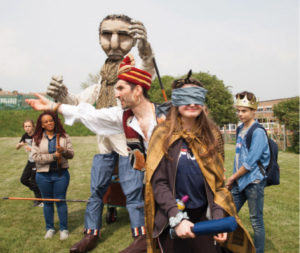 Through events like Brighton Festival, young people can explore, discover and participate in the arts. For 30 years the Children’s Parade has officially marked the start of Brighton Festival, with over 5,000 participants, including 3,473 school children, stepping into show stopping costumes they have designed and made themselves. Around 10,000 people come along to see the parade and be part of the largest annual children’s event in the UK. The parade is a unique event produced by community arts organisation, Same Sky, which offers thousands of young people the chance to come together in creations they’ve designed around a central theme, giving them a sense of belonging. In 2020, the Children’s Parade theme is Nature’s Marvels, offering a platform for participants to think more about the world and environment around them.
Through events like Brighton Festival, young people can explore, discover and participate in the arts. For 30 years the Children’s Parade has officially marked the start of Brighton Festival, with over 5,000 participants, including 3,473 school children, stepping into show stopping costumes they have designed and made themselves. Around 10,000 people come along to see the parade and be part of the largest annual children’s event in the UK. The parade is a unique event produced by community arts organisation, Same Sky, which offers thousands of young people the chance to come together in creations they’ve designed around a central theme, giving them a sense of belonging. In 2020, the Children’s Parade theme is Nature’s Marvels, offering a platform for participants to think more about the world and environment around them.


